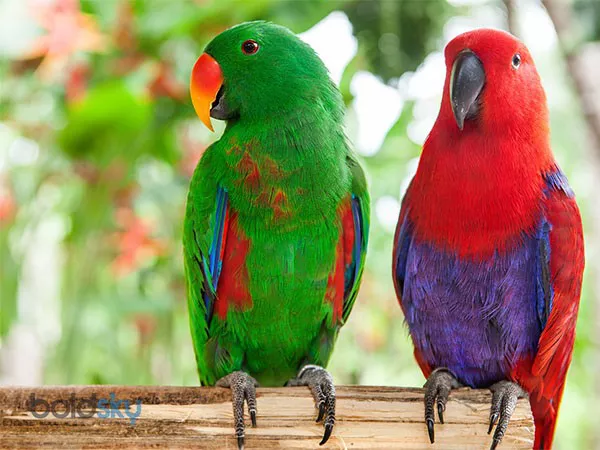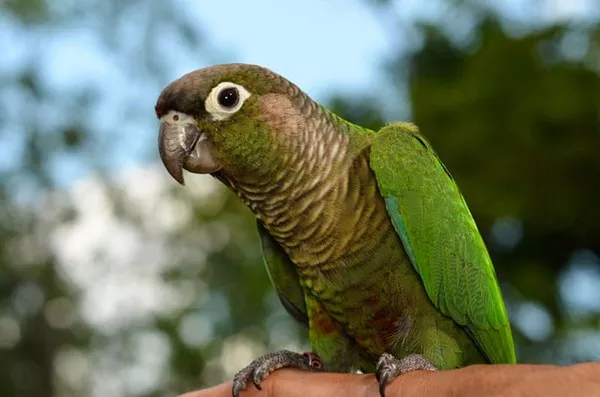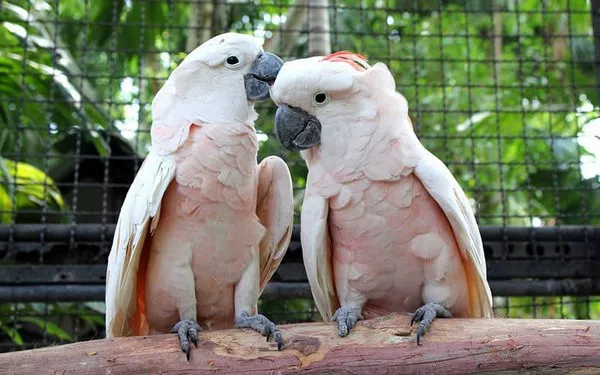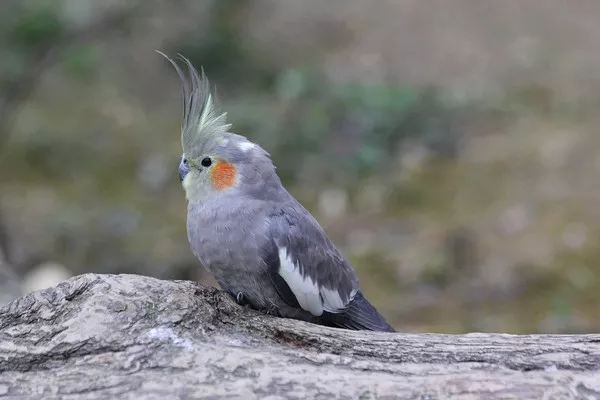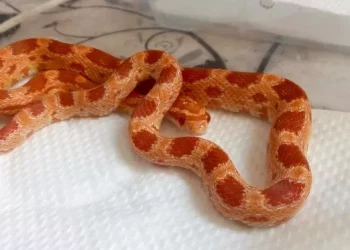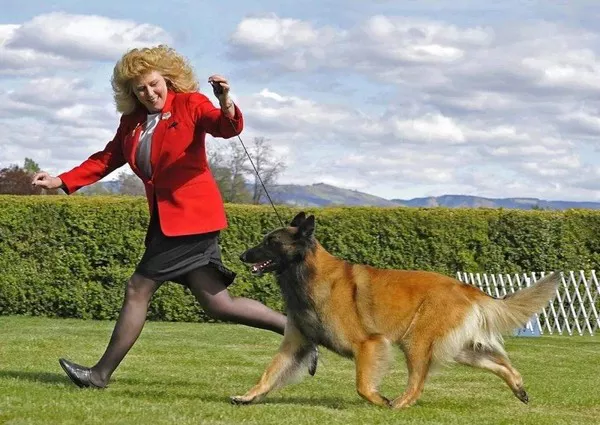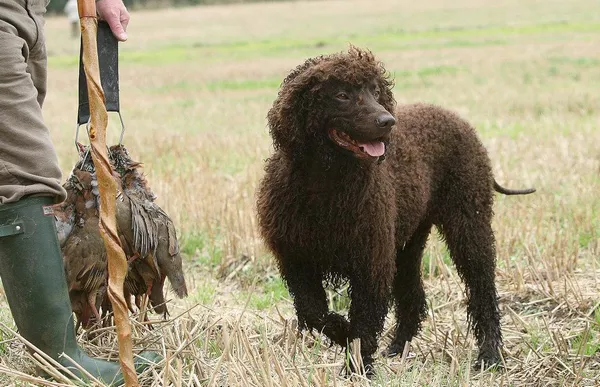Corn snakes (Pantherophis guttatus) are among the most popular and well-loved pet snakes, and they are known for their docile temperament, beautiful patterns, and relatively easy care requirements. As with any pet, one of the most important aspects of caring for a corn snake is understanding its feeding habits. Knowing how often corn snakes need to eat, what to feed them, and how to monitor their diet properly will ensure that they remain healthy and thrive in captivity.
In this article, we’ll discuss how often corn snakes eat, what factors influence their feeding frequency, what they should be fed, and other essential tips for keeping your snake’s diet on track.
The Basics of Corn Snake Feeding
Corn snakes are constrictor snakes, meaning that they capture and kill their prey by wrapping around it and squeezing. In the wild, their diet consists mainly of small mammals, birds, and sometimes lizards. In captivity, however, they typically eat prey items like mice and rats. Understanding the diet of a corn snake in the wild helps us understand their dietary needs in a domestic setting.
One of the main questions that pet owners have when it comes to corn snakes is, “How often should I feed my corn snake?” The answer to this question is not as simple as it may seem, as there are several factors that influence a corn snake’s feeding schedule. In this article, we’ll break down all the key aspects that determine how often you should feed your corn snake.
1. Age and Size of the Corn Snake
The frequency of feeding your corn snake will largely depend on its age and size. Younger corn snakes grow rapidly, and their energy needs are higher than those of adults. As they mature, their feeding schedule will decrease.
Hatchlings and Juveniles (0 to 1 year): Corn snake hatchlings and juveniles have the highest energy needs because they are growing quickly. Typically, they should be fed once every 5 to 7 days. They will usually eat small prey, such as pinky mice (newborn mice).
Sub-adults (1 to 3 years): As corn snakes reach sub-adulthood, they continue to grow, but at a slower rate. At this stage, they can be fed every 7 to 10 days. The size of the prey should also increase as the snake gets larger, moving on to small or medium-sized mice or even rats, depending on the snake’s size.
Adults (3+ years): Once a corn snake reaches full maturity, feeding frequency will decrease. Adult corn snakes generally only need to be fed every 10 to 14 days. At this stage, the prey should be larger and include medium to large mice or even small rats.
2. Activity Level and Temperature
Corn snakes are cold-blooded creatures, which means their metabolism and digestive processes are heavily influenced by the temperature of their environment. If the snake is kept in a habitat that is too cold, it may not eat as frequently because its metabolism will slow down.
Temperature Control: A proper temperature gradient in the enclosure is essential for your corn snake’s well-being. The ambient temperature should range from 75°F to 85°F (24°C to 29°C) during the day, with a basking spot that can reach 88°F to 92°F (31°C to 33°C). If the temperature drops below 70°F (21°C), your corn snake may refuse food because its metabolism has slowed down.
Winter Fast: Some adult corn snakes, especially those in the wild, may enter a period of fasting during the colder months. This phenomenon is known as brumation, which is similar to hibernation. Brumation is not always necessary for captive snakes, but some owners may notice that their snake naturally eats less during the winter months. If your corn snake begins to refuse food for a prolonged period, it’s important to check the temperature in the enclosure to ensure it is within the proper range.
Activity Level: Corn snakes tend to be more active at night, as they are primarily nocturnal. If your snake is more active, it may be more likely to eat regularly. Conversely, if your snake is relatively inactive or stressed, it may eat less often.
3. Size of the Prey
Another critical factor that influences how often you feed your corn snake is the size of the prey. The general rule is to offer prey that is about the size of the snake’s widest point. Offering prey that is too large can cause digestive issues, while offering prey that is too small may not provide enough nutrition.
Prey Size for Hatchlings and Juveniles: Hatchlings and juveniles should be offered small prey, such as pinky mice. These are small enough for young corn snakes to swallow and digest easily. As they grow, the size of the prey should be gradually increased.
Prey Size for Adults: Adult corn snakes can handle larger prey, such as adult mice or small rats. These larger prey items may take longer to digest, so it’s important not to overfeed your snake. Offering the right-sized prey ensures that your corn snake’s nutritional needs are met without overburdening its digestive system.
4. Corn Snake Health and Feeding Habits
A healthy corn snake will usually eat regularly. However, various factors can influence its eating habits, including health issues, stress, or environmental changes.
Stress: Stress is a common reason why a corn snake may refuse food. Changes in its environment, such as moving to a new enclosure, introducing new animals, or even overhandling, can cause stress. If you notice that your corn snake is not eating, consider any changes in its habitat and try to minimize potential stressors.
Illness: If your corn snake stops eating for an extended period, it may be a sign of illness. Respiratory infections, mites, parasites, or internal issues can cause a snake to lose its appetite. If your snake is lethargic, refuses food, or displays other signs of illness (such as abnormal shedding), it is essential to consult a veterinarian who specializes in reptiles.
5. How Often Should You Feed Your Corn Snake?
So, how often should you feed your corn snake? The answer varies depending on age, size, and other factors, but here are some general guidelines:
Hatchlings and Juveniles (0 to 1 year): Feed every 5 to 7 days.
Sub-adults (1 to 3 years): Feed every 7 to 10 days.
Adults (3+ years): Feed every 10 to 14 days.
It’s important to note that feeding frequency is not set in stone and can be adjusted based on the specific needs of your corn snake. For example, if you notice your snake is gaining too much weight, you may want to reduce the feeding frequency. On the other hand, if your snake is too thin, you may need to feed it more often or provide larger prey items.
6. Feeding Techniques and Tips
When feeding your corn snake, there are a few best practices to keep in mind to ensure both the safety and health of your pet.
Frozen vs. Live Prey: It is strongly recommended to feed your corn snake frozen-thawed prey instead of live prey. Live mice or rats can injure your snake, and there is a risk of the prey attacking your snake. Frozen-thawed prey is safer, and you can easily store it for future use. Always thaw the prey to room temperature before offering it to your snake. Never feed your snake cold or frozen prey, as it could cause digestive issues.
Feeding Frequency: While it’s important not to overfeed your corn snake, it’s also essential not to underfeed it. If you aren’t sure how much to feed, consult a veterinarian or a reptile expert. You can also monitor your snake’s weight and adjust the feeding schedule accordingly.
Feeding Tools: Use tongs or feeding forceps to offer prey to your snake. This will help keep your hands away from the snake’s mouth, reducing the risk of accidental bites. Tongs also help to ensure that the prey is presented properly and encourages the snake to strike and constrict.
Avoid Handling After Feeding: After feeding your corn snake, give it time to digest. Handling the snake immediately after feeding can cause stress and may lead to regurgitation. It’s best to wait at least 24 hours before handling your snake after a meal.
7. Signs That Your Corn Snake Is Overfed or Undernourished
A well-fed corn snake should be active and have a healthy body condition. Here are some signs to look out for to determine if your snake is overfed or undernourished:
Overfed Corn Snake: If your corn snake is overweight, it may appear sluggish, have a noticeably thick or bloated midsection, or have trouble moving. Overfeeding can lead to obesity, which can cause long-term health problems. Make sure to feed your snake the correct portion sizes and avoid offering excessive food.
Underfed Corn Snake: If your corn snake is underfed, it may appear thin, with visible ribs or a concave belly. It may also seem lethargic and have a poor appetite. If your snake is losing weight or not eating, consult a veterinarian to rule out any potential health issues.
Conclusion
Feeding a corn snake requires understanding its unique dietary needs based on its age, size, activity level, and overall health. Younger snakes need to eat more frequently to support their rapid growth, while adults can be fed less often. Monitoring your snake’s health, adjusting its feeding schedule as necessary, and offering the right-sized prey will help ensure that it thrives in captivity.
By keeping a proper feeding schedule and being mindful of your corn snake’s specific needs, you can ensure that your pet remains healthy, active, and content. If you’re ever unsure about how often to feed your corn snake or if you notice any changes in its eating habits, it’s always a good idea to seek advice from a reptile veterinarian.
Related Topics:


